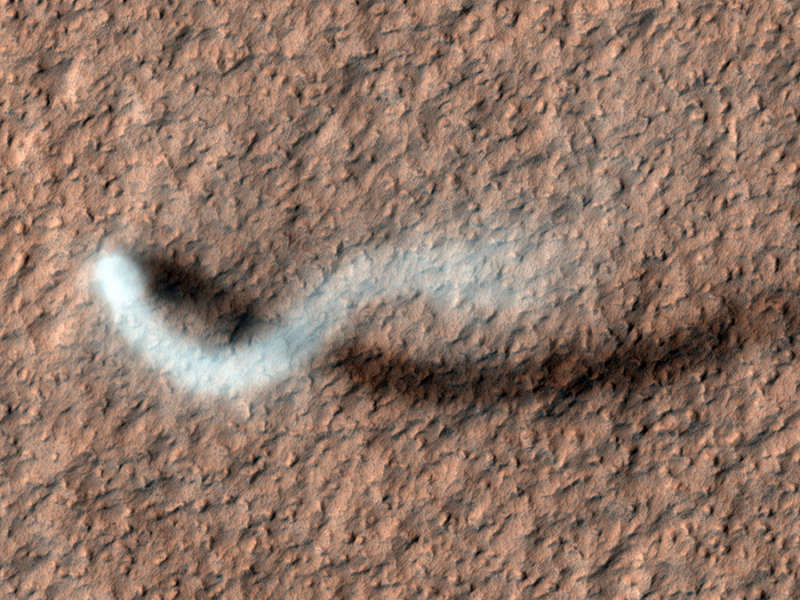A Dust Devil of Mars

Explanation:
It was late in the northern martian spring
when the HiRISE camera onboard the Mars Reconnaissance Orbiter
spied
this local denizen.
Tracking south and east (down and right)
across the flat, dust-covered
Amazonis Planitia
the core of the
whirling dust devil is about 30 meters in diameter.
Lofting dust into the thin
martian
atmosphere, its plume
reaches more than 800 meters above the surface.
Not following the path of the dust devil, the plume is blown toward
the east by a westerly breeze.
Common in this region,
dust devils occur as the surface is heated by the Sun,
generating warm, rising air currents that begin to rotate.
Tangential
wind speeds of up to 110 kilometers per hour are reported
for
dust devils in other HiRISE images.
Authors & editors:
Robert Nemiroff
(MTU) &
Jerry Bonnell
(USRA)
NASA Web Site Statements, Warnings,
and Disclaimers
NASA Official: Jay Norris.
Specific
rights apply.
A service of:
LHEA at
NASA /
GSFC
& Michigan Tech. U.

